 |
|
|
Onassis Cultural Center
Greek / American |
|
|
|
|
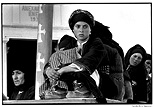 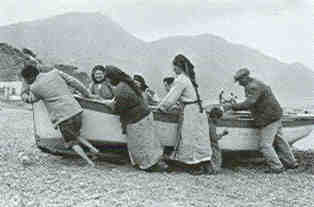 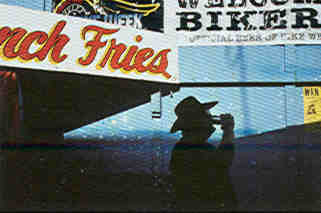 |
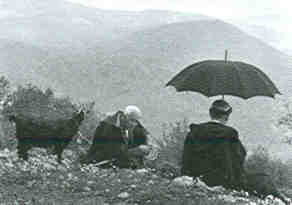 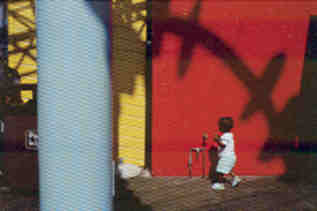 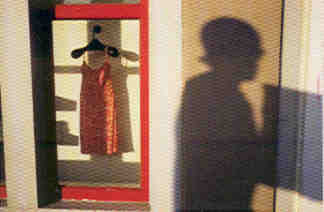 |
|
The Greek Village in the 1960's A Greek Portfolio |
|
| One day I was walking toward the sea on the southern coast of Crete. Beyond the distant cliffs lay Africa, two hundred miles away. Here Greece ends. It was a warm overcast day as I picked my way over the rocky outcroppings of the barren landscape. The silence of the place was touched only by the distant tinkling of sheep bells. As I walked, raising my head occasionally to the sea, I began to discern an unusual black shape in the distance. Soon it became apparent that this immobile object was a man sitting on a rock. He was resting his head in one hand, his eyes covered. His other hand grasped a shepherd's staff, its crook resting under his arm. As I came closer, I slowed my pace and moved more gently over the rocks. I felt that I was invading a vast and serene privacy that would be shattered by my presence. I held my breath as I moved closer for fear of startling the man. I expected him to look up at any moment; then I stopped, only a few feet from the bent figure. I slowly raised the camera to my eye and pressed the button. He slowly raised his head, looked at me calmly, and said good morning. The picture had been taken, and the experience was over. Each photograph in this portfolio was a personal experience and a particular moment in time both for the photographer and the subject. The people in these photographs lived in small villages and isolated farmhouses scattered over the Greek countryside. They were mostly poor people but extremely proud and strongly defined as individuals. Most of the young had left to seek work in the cities of Greece and distant lands, leaving behind a sparsely settled landscape of old people and children. My passage through this countryside was leisurely and unplanned, that of a friendly observer. My presence was accepted with unquestioning warmth and hospitality. In time I came to learn that nothing is more sacred to the rural Greek than philoxenia, which literally translated means "friendship toward the stranger." The resulting photographs should be viewed as one man's experiences in Greece. No attempt has been made to define Greece or the Greek people, for such attempts inevitably lead to generalities. By his unique nature each human being defies generalities, and no two people are the same. The individual is constantly changing in relation to time, his environment, and other people. Selecting a split second in which to arrest this passage through time is the unique magic of the camera. These small particles of time have passed. Whatever truth and meaning they might possess are captured forever in these images. |
|
|
Constantine Manos Greek / American |
|
|
In the turmoil following the First World War and the great exchange of populations between Greece and Turkey, they were forced to leave their village and lost every thingthe homes, the church, the fields, the olive groves, the animals, and all those myriad details which comprise to chorio, the village. As a child growing up, I always heard my parents, Dimitri and Afroditi, speak longingly of their village and the life they had left behind. Images of a place I had never seen became ingrained in my childhood memory. Growing up with these stories, I too developed a longing for my parents' village, a longing that finally propelled me to go to Greece in 1961 with my camera to search for the lost chorio of my parents. It was the romantic pilgrimage of a young man who did not have a good idea of what he was looking for or what he would find. Home base was a small apartment in Athens, where I promptly installed a simple darkroom in the kitchen to develop my film and make prints. Eventually I acquired a Volkswagon van in which I set out on expeditions into the countryside. Everywhere I went I was greeted with warmth and hospitality by simple but dignified people still suffering the privations of a world war followed by a brutal civil war. I soon realized that the village life I was searching for was to be found in remote places, usually with no electricity. Out of this wandering and searching came the pictures for my book A Greek Portfolio, first published in 1972 and in a new edition in 1999 accompanied by a major exhibition at the Benaki Museum in Athens. The pictures for my book American Color, published much later in my career in 1995, also had their roots in my growing up in a Greek household in Columbia, South Carolina. Feeling very much as outsiders, our family would often have discussions about oi Amerikanoi, the Americans. Torn between being a Greek and being an American, I was intrigued with these Americans and was always a curious observer of their customs and ideas. Many years later, having reached a turning point in my photography, I began using color to investigate this thing called "America"-a big subject which had always seemed more exotic to me than faraway places as India and China. Even after the book was published, I could not stop photographing the United States. Most of the color images in the present exhibition come from new and unpublished work that will appear in American Color 2. Constantine Manos is a member of Magnum Photos, the international picture agency. His books include Portrait of A Symphony, A Greek Portfolio, Bostonians, and American Color. Manos's photographs are in the permanent collections of the Museum of Modern Art, New York; Art Institute of Chicago; Houston Museum of Fine Arts; Boston Museum of Fine Arts; George Eastman House, Rochester, N.Y.; High Museum of Art, Atlanta; Bibliotheque Nationale, Paris; Chrysler Museum of Art, Norfolk, Va. Manos has conducted master classes in Maine, Cuba, Mexico, and Greece. In 2003 he won the Leica Medal of Excellence out of a world-wide field of 250 entries. |
|
|
A Personal Odyssey in the U.S.A. American Color |
|
|
The subject of American Color is photographs made in the United States but not meant to comprise a general or definitive statement about the country or its people. These images are a collection of specific moments selected from a narrow spectrum of public places and events. Presented without the constraints of captions, these photographs have a life of their own and invite a personal response from the viewer. My favorite pictures have always been complex ones that ask questions and pose problems but leave the answers and solutions to the viewer. These images have a long and evolving life, in which the photographs may transcend the subject and become the subject. Central to the strength of these images is photography's most precious and unique quality, believability: that the moment preserved on a piece of paper is true and unaltered, that it really happened and will never happen again. In the search for photographs I have come to realize that the best pictures are surprises, images I subconsciously seek but do not recognize until they suddenly appear. These are thrilling moments in a type of photography which can be frustrating and unpredictable, with the picture often spoiled by something so minor as a wayward cloud over the sun or the momentary glance of a subject at the camera. In approaching people, I prefer to be the observer rather than the observed and value the human presence as the most important element in my pictures. The flow of people in a setting, their changing relationships to one another and their environment, and their constantly changing expressions and movements all combine to create dynamic situations that provide the photographer with limitless choices of when to push the button. By choosing a precise intersection between subject and time, he may transform the ordinary into the extraordinary and the real into the surreal. |
|
|
Onassis Cultural Center - Olympic Tower Atrium 645 Fifth Avenue - Entrance on 51st & 52nd Between Fifth and Madison New York, NY. 10022 http://www.onassisusa.org |
|
|
(Posting date 30 May 2007) HCS encourages readers to view other articles and releases in our permanent, extensive archives at the URL http://www.helleniccomserve.com/contents.html. |
|
|
|
|
2000 © Hellenic Communication Service, L.L.C. All Rights Reserved.
http://www.HellenicComServe.com |
|
